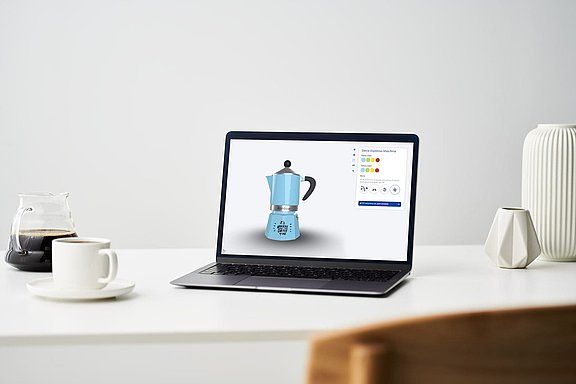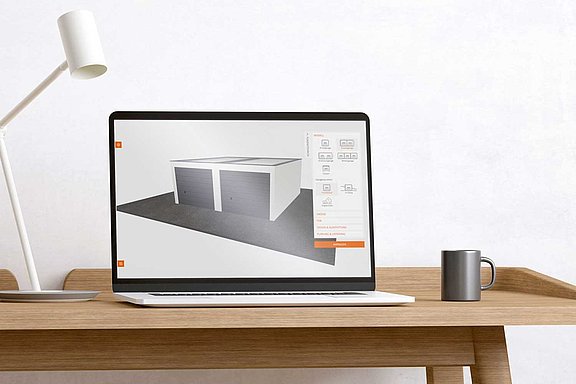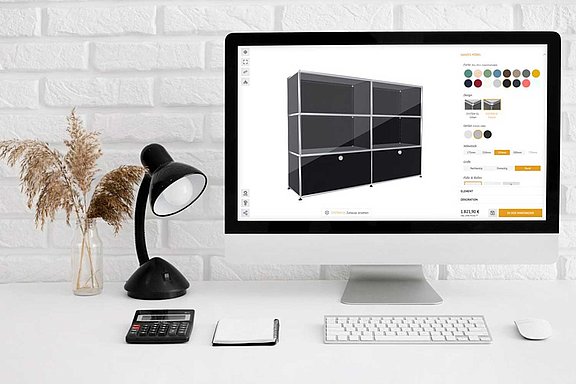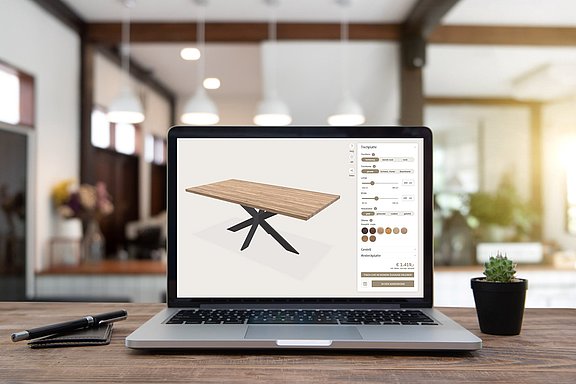Combeenation platform - how long does it take for a configurator?
Author: Walter Burgstaller
With the Combeenation platform, you can create configurators much faster than compared to manual programming. But how high is the development effort for a configurator with the platform?
In this blog, we are dedicated exclusively to the actual execution time, without looking at the process of creating the requirements specification with product tree, product dependencies and personas. For more information on these topics, see our blog post on "Why a workshop is necessary before buying a configurator." We also leave out the creation of product material such as images or 3D models in this consideration.
We show four different use cases, with hours reported for the following:
- the creation of the user interface (UI)
- the configurator building itself
- testing and bugfixing by the configurator creator, whereby the testing time of the customers is not taken into account here.
The 3-minute configurator
How "fast" you can build a "configurator" can be seen in our video "How to build a Configurator within 3 minutes". Although the 3-minute configurator is not a configurator suitable for everyday use, the video clearly shows what the platform can do. It illustrates what is available out-of-the-box or can be created automatically.
The time required is taken into account in the use cases, but the following points are not mentioned because they occur in all configurators or can be implemented very easily with the platform.
- Connection to a store system and or an email request
- Saving of configurations
- Social Media Sharing
- Augmented Reality
- Selecting one or more colors or a material for a part or the whole product
Use Case 1: Espresso pot
The espresso pot is a very simple configurator, where in addition to a color, a motif can also be selected. As a small gimmick, the lid can be opened and closed. This is a small animation, which was realized directly in the 3D model.
The total effort was 10 hours. Due to the simplicity of the configurator, testing and bug fixing was not done separately.
- User Interface: 4 h
- Configurator: 6 h
- Testing & Bugfixing: 0 h

Configurator checklist
Avoid stumbling blocks.

Use Case 2: An office or garage configurator
In this case study, we look at a configurator with a modular body such as an office or garage.
What can be configured?
- Selection from various predefined sizes in length, width and height.
- Selection of elements or walls and the configuration of these elements.
- Selection of several different non-visual options, but relevant for the order. For example, "Has the building application of the garage already been submitted?" or "Do you need a roof reinforcement?"
- Showing the exterior dimensions, without any further detailed dimensioning of the product.
Total implementation time was 55 hours.
- User Interface: 15 h
- Configurator: 37 h
- Testing & Bugfixing: 3 h

Use Case 3: A modular furniture system
Let's take a closer look at the next case study, a modular furniture system. Here, different pieces of furniture can be lined up in a modular fashion, each with plus/minus buttons that can be used to add - or delete - left, right, or even on top.
It can also be built around corners, with collision detection ensuring that the options selected by the user do not cause problems or collisions. When a user creates a custom piece of furniture, collision detection could ensure that the selected components do not result in an impractical or unstable structure.
It is also possible to fade in the external dimensions. In this case study, each individual module can still be configured, such as showing and hiding drawers, compartments or back panels,... The price is displayed in real time. Sale of accessories - which are important for the order but are not visualized in the 3D model.
An e-mail request is created, through which the manufacturer receives a data sheet in PDF format. This data sheet contains a parts list and a dimensional drawing with detailed individual dimensions. An order form is created as an XML file, which can be used directly in the ERP system for order creation.
Total implementation time was 265 hours.
- User Interface: 25 h
- Configurator: 210 h
- Testing & Bugfixing: 30 h

Use Case 4: A configurable table
The last and fourth case study relates to a configurable table, where a choice can be made between three table shapes: square, oval or round. With the oval and round table shapes, one can choose from fixed predefined table sizes. In the case of the square table, the length and width can be defined in cm within a predefined range using a slider. The table is displayed in real time in its configured size.
In addition, various frames and side extension boards can be configured. There are several dependencies of the frames and materials to the table types and sizes. The price is also displayed here in real time.
Total implementation time 120 hours.
- User Interface: 10 h
- Configurator: 100 h
- Testing & Bugfixing: 10 h

Conclusion
With these configurator examples we want to give you a feeling for how long it takes to create a configurator with the Combeenation platform. A very simple product configurator can be realized in a few hours. For somewhat more extensive configurators, you need about 60 to 120 hours. And depending on the complexity of the product, such as system furniture, up to 300 hours.
In detail, the complexity of each project may well vary greatly in practice, because often functions that are not directly visible, such as
- PDF data creation,
- database connections or
- detailed dimensioning can take more time.
In general, our platform is up to 80% faster than building your own - where you have to program everything yourself. Do you want to try out the platform yourself and create configurators? Then they register on the platform via our website.
This might also interest you:

Configurator checklist
Avoid stumbling blocks.

